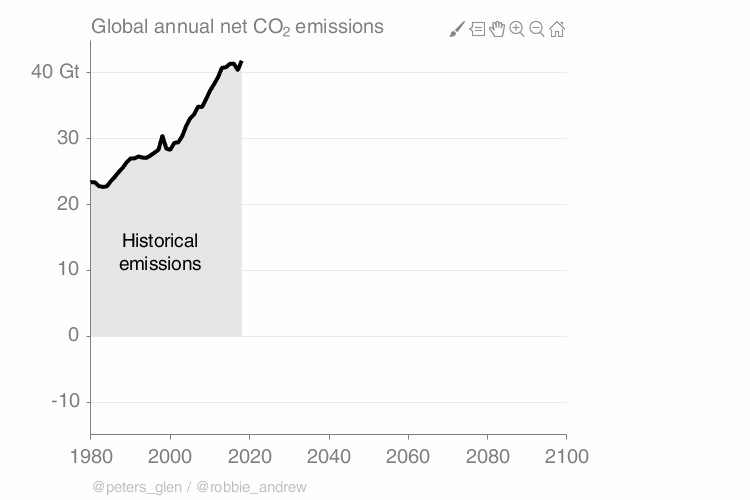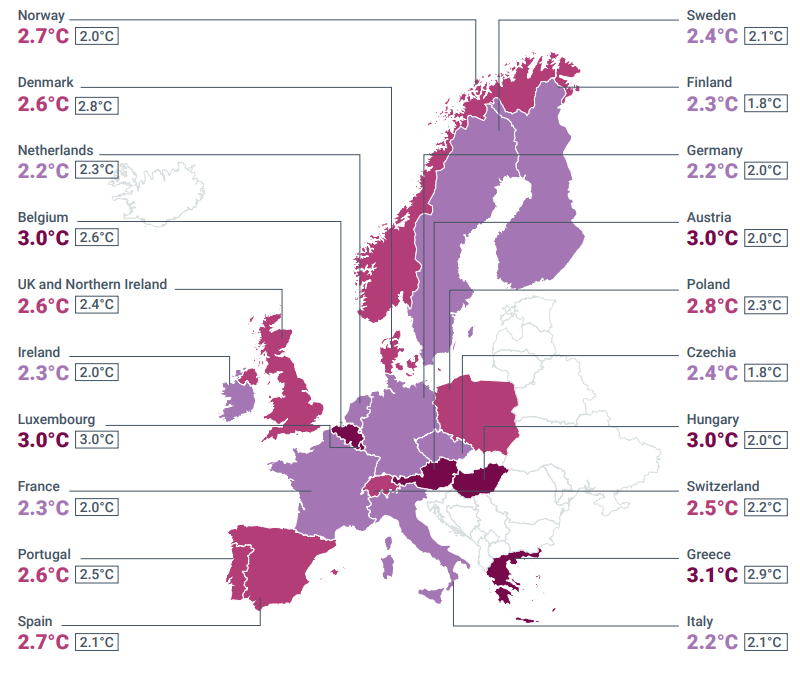It’s getting harder and harder to limit global warming to 2°C – “It is partly this hope in future technologies that delays action”
By Robbie Andrew
23 April 2019
(Robbie Andrew) – The road to 2°C is steep; the road to 1.5°C is a cliff.
While it is theoretically possible that we can keep global warming under 1.5°C above pre-industrial temperatures, that task is monumental. In fact, models struggle to generate future scenarios that keep warming below 1.5°C, but can pull temperatures back under 1.5°C after they have overshot that target. Even then, some of these models assume that there has been a global carbon tax in place since 2010 (there has not).
What is required is not only unheard-of cuts in global emissions of greenhouse gases (not just CO2), but also the development of new technologies to pull CO2 out of the air and store it safely again (“negative” emissions).
Every year we delay devours the remaining budget. For the 1.5°C case, every year that we don’t cut emissions uses up more than 10 percent of our remaining budget. But we must not give way to panic: panic is debilitating, and we need action. Yes, the consequences of a 1.5°C world aren’t pretty, and we should take this extremely seriously and do our very best as a global society to avoid that. In all likelihood we won’t succeed, but those efforts we make will contribute enormously in holding warming down. The consequences of warming multiply as the temperature rises, 2°C is worse than 1.5°C, 2.5°C is worse than 2°C, and so on.

The road is hard and long, but waiting is not an option.
Our remaining carbon budget to keep warming under 1.5°C is tiny. Modelling shows the ‘best’ way to achieve this is by actively removing CO2 from the atmosphere: ‘negative emissions’. Doing this allows more room for actual, positive emissions.
At the moment this vast cavalry of negative emissions charging to save us from ourselves is but a dream. Various technologies are being explored, as well as good, old-fashioned tree planting, but all have significant limits. It is partly this hope in future technologies – technological optimism – that delays action. [more]



